The Power of Open: The Power of Openness
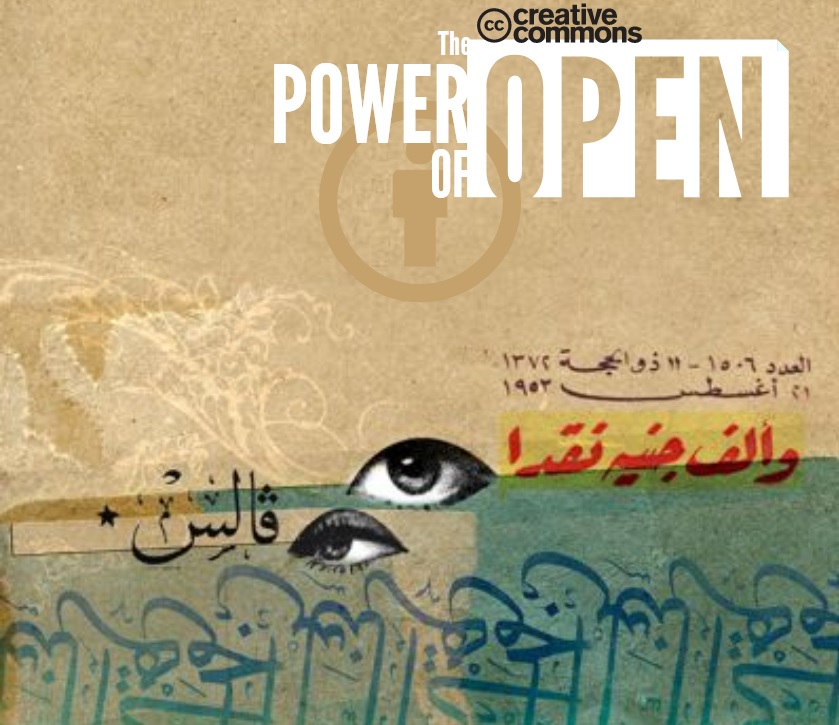
Introduction
The world has experienced an explosion of openness. Starting with individual artists displaying their creations in anticipation of contributions from other people, ending with governments that require publicly funded works to be made publicly available. Both the spirit and practice of sharing are gaining momentum and producing results.
Creative Commons began to provide licenses for open exchange just ten years ago. Currently, more than 400 million CC licenses are available on the Internet: from music and photos to research results and entire college courses. Creative Commons has created a legal and technical infrastructure that allows for the effective use of knowledge, art and data by individuals, organizations and the government. And the most important thing is that millions of creators used this infrastructure to exchange jobs that enrich the global wealth for all of humanity.
The power of openness collects the stories of these creators. Some of them are similar to ProPublica, the research news organization that won the Pulitzer Prize, which uses CC, working with the world's largest media companies. Others are like a vagabond cinematographer Vincent Moon, who uses CC licensing as an integral part of his lifestyle in his pursuit of creativity. The breadth of use is as multifaceted as the creativity of people and organizations who prefer to open their content, art and ideas for the rest of the world.
')
As we look to the future, the field of openness is approaching a critical mass of acceptance, which may lead to the exchange becoming the default for many works that were previously available only within all reserved rights. Even more fascinating is the potential for increasing global well-being, thanks to the use of Creative Commons tools and the increasing relevance of openness to the discourse of cultural, educational and innovation policies.
We hope that the power of openness inspires you to learn and accept open licensing practices so that your contributions to the global intellectual property can be most beneficial to all people.

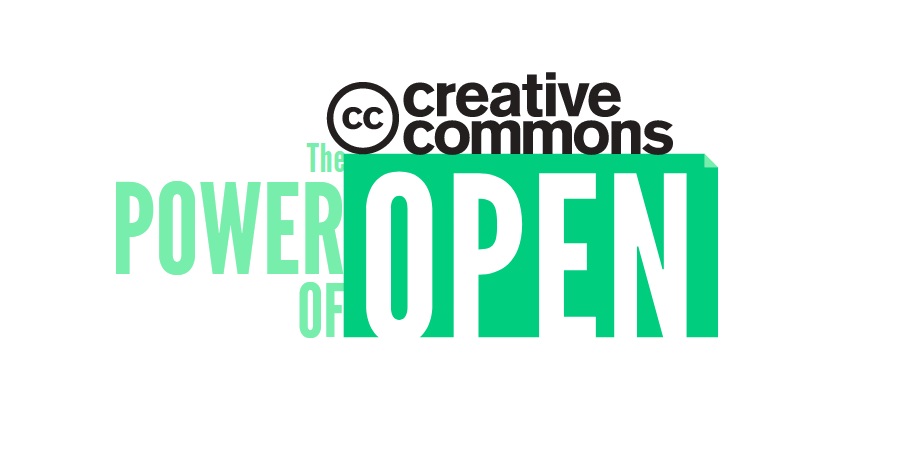
About Creative Commons
Our vision is nothing but the realization of the full potential of the Internet - universal access to culture, education and research - to launch a new era of development, growth and productivity.
The idea of universal access to research, education and culture has become possible thanks to the Internet, but our legal and social systems do not always allow to realize this idea. Copyright was created long before the advent of the Internet and can make it difficult to carry out legal actions that we take for granted on the web: copying, pasting, editing the source and publishing on the Internet. By default, copyright law requires that all these actions have explicit permission provided in advance, whether you are an artist, teacher, scientist, librarian, politician, or just an ordinary user. To achieve the universal access vision, someone had to provide a free, publicly accessible and standardized infrastructure that would create a balance between the reality of the Internet and the reality of copyright laws. This someone is Creative Commons.
Our mission

Creative Commons develops and maintains legal and technical infrastructure that maximizes and manages digital creativity, sharing, and innovation.
What we represent
The infrastructure we provide consists of a set of licenses and copyright protection tools that create a balance within the traditional setting that sounds like “all rights reserved” established by copyright law.
Our tools give both individual authors and large companies and institutions a simple, standardized way to preserve their copyright, while allowing certain people to use their work - an approach based on the principle of “some rights reserved” —this makes them creative. , educational and scientific content more compatible with the full potential of the Internet. The combination of our tools and our users is a huge and growing digital community, a repository of content that can be copied, distributed, edited, remixed, and create something new based on it, all within the framework of copyright law. We work with copyright experts around the world to make sure our licenses are legally valid, globally applicable, and meet the needs of our users.
For those creators who want to completely renounce copyright and maximize data compatibility, Creative Commons also provides tools that allow you to post your work as widely as possible in the public domain.
Our vision is nothing but the realization of the full potential of the Internet - universal access to culture, education and research - to launch a new era of development, growth and productivity.
How we plan to develop
We build infrastructure in Creative Commons. Our users create their own community. We are working to expand the use of our tools, strongly support and listen to our users, and also try to be reliable managers of the interoperable community infrastructure.
Your support
To achieve the dream of the Internet, full of open content, where users are participants in the innovation culture, education and science, we depend on the support of our users and those who believe in the potential of the Internet. We are alive and thriving thanks to the generous support of people like you. Tell CC about your friends and family and donate to help keep Creative Commons as a reliable, long-lived and stable organization.
Creative Commons is a 501 © (3) charitable corporation, exempted from taxes in Massachusetts.
Creative Commons licenses
Creative Commons licenses give both individual authors and large companies and institutions a simple, standardized way to preserve their copyright, while at the same time allowing certain people to use their work. The licensing authorities have a huge selection of options that you can allow people to use.
Creative Commons licenses include a unique and innovative three-level design. The first level is a “legal code” consisting of traditional legal instruments applicable worldwide. It is complemented by a “human-readable” explanation in a more user-friendly language accessible to most creators. The last level is a “machine readable” description of what software systems, search engines, and other technologies can understand and use to make finding and using CC-licensed work more convenient.
Together, the three levels of licenses ensure that the range of rights covered by our tools is not something that only lawyers can understand. This is what the authors of their works, their users, and even the Internet can understand.

This license allows others to distribute, customize, redo your work and create something new, based on it, even for commercial purposes, as long as they attribute authorship to you. This is the most acceptable license. Recommended for maximum distribution and use of licensed materials.

This license allows others to distribute, customize, redo your work and create something new, based on it, even for commercial purposes, if they point to this product and all other new creations that were based on your product, your name is the same. conditions. This license is often compared to free copyleft software licenses and open source. All new works based on yours will have the same licenses, so any derivative instruments also allow commercial use. This is a license used by Wikipedia, and is recommended for materials that may be useful for including content from Wikipedia and similarly licensed projects.

This license permits redistribution, commercial and non-commercial, if
The product is transferred unchanged and in its entirety, with a copyright notice.

This license allows others to distribute, customize, redo your work and create something new, based on it non-commercially, and although new works by other users must also recognize you and be non-commercial, they should not license their derivative works under the same conditions.

This license allows others to distribute, customize, redo your work and create something new, based on it non-commercially, as long as they credit you and the license for their new creations under the same conditions.

This license is the most restrictive of our six primary licenses, allowing others to upload your work and share it with others if they provide your name, but they cannot change products in any way or use them on a commercial basis.
Creative Commons also provides tools that work in the “all rights granted” space for public use. Our SS tool! allows licensing authorities to waive all rights and post the work in the public domain, and our public domain sign allows any web user to “mark” the work as publicly available

CC! allows owners of copyrighted content to relinquish copyrights and thereby maximally publish them in the public domain, so that others can freely improve and reuse their creations for any purpose without copyright restrictions. Unlike Creative Commons licenses, which allow copyright holders to choose from a range of permissions while maintaining their copyright, CC! gives one more choice - a choice for waiving copyright and obtaining exclusive rights that are automatically granted to creators.

Public Domain Mark (PDM) is a tool that allows you to immediately work in a public domain, which should be marked in such a way as to clearly convey the work status of a public domain and allow it to be easily detected. PDM is not a legal tool such as CC! or CC license - it can be used only to designate work with information on the status of the public domain, and not to change the current status of the work in accordance with copyright. However, like CC! and CC licenses, PDM has a metadata enabled document and is machine readable, allowing you to work with PDM labels on the Internet.
Stories
Ted
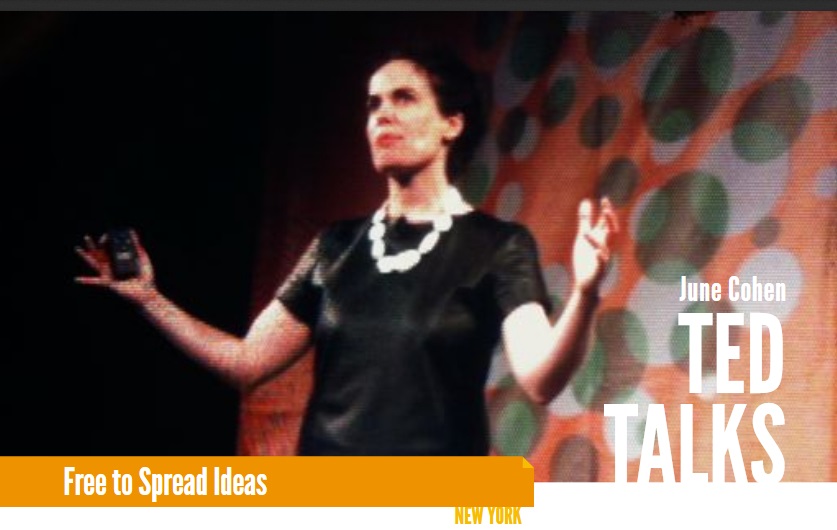
The current foundation of the online ecosystem, TED Talks, began with exclusive workshops in which only a select few participated. Five years after the publication of all TED speeches on the Internet under a Creative Commons license, more than 200 million viewers experienced the innovative thinking of TED speakers.
“This phenomenal growth is entirely due to free and open distribution,” says June Cohen, executive producer at TED Media. “CC licensing allowed us to exchange ways that we have exceeded many times what we could have done on our own.”
“When we decided to open our library, we had one goal: to spread ideas,” says Cohen. “Every decision we made was based on this goal. Creative Commons is the most effective way to expand the capabilities of our product and free us from talking about what can or cannot be done with our videos.
“Sharing online was a very controversial decision. People were afraid that this would upset our business, would not allow people to pay for our conference and therefore would be rejected by speakers.
“In the first year after we distributed video clips for free, we raised the cost of the conference by 50 percent and sold it off within one week, and another 1,000 people were in the waiting line,” says Cohen. "Not only the fans are asking for the videos to be published as soon as possible, but also the conference participants want to share the presentations they just heard at the conference with family, friends and colleagues."
TEDs with Swedish physician and Hans Rosling’s statistics on developing countries show how CC licenses can popularize the subject. “Hans told me that publishing his first TED Talk online did more to influence his career than all the other things he had done before,” Cohen says. "This has opened up a whole new world for him."
“Our unintended consequences were explosive,” says Cohen. “This is not only growth, but also the fact that our global audience has become a global team, embracing our brand and encouraging further innovation. A Creative Commons license says that you are really serious about spreading ideas. ”
Khan Academy

In 2004, Salman Khan managed a hedge fund in Boston when he started a virtual training session with his 12-year-old cousin in New Orleans using Yahoo's Doodle. She liked it, so he started posting them on YouTube so that others could learn from them. Within two years, his videos had received so many responses on the Internet that Khan had registered as a non-profit organization, stopped his work and decided to engage in short educational videos full-time.
Khan made all the original videos and published them under the Creative Commons BY-NC-SA license. Today, Khan Academy hosts more than 1,600 training videos that teach everything from chemistry and algebra to the causes of the housing crisis, recruiting over a million unique users per month. Khan is not a teacher by profession, but the influence of his teachings spreads across state borders - 40 percent of his viewers abroad. The Khan Academy is funded mainly through donations, and they grow about three times each year. A recent donation to the support of the Bill and Melinda Gates Foundation raised the rating to six, and the vocal support of Bill Gates significantly increased Han's personal rating.
Khan still receives letters every day from high school students, college children, and adults who dream of the good grades and knowledge they can get in the Khan Academy classes. And since the videos are free for remixing and sharing, people translate them into other languages, and some of the lessons have become viral.
“By all the standards we still have, they are definitely better than what many get in the classroom,” says Khan. “And the most important thing is that if tomorrow a bus hits me, I can still continue teaching millions of people a year. You will get to the present and future, even if you are not around. "
But what made a high-ranking guy from hedge funds give up their day job and just shoot a video for YouTube? “Once I received a letter from a student,” says Khan. “He was from a poor family without college graduates and hated math. Then he found a video of the Academy Khan and watched them all summer before the exam, and answered all the questions correctly. This has never happened before in this college, and he graduated with honors. That is what made me quit my job. ”
Arduino
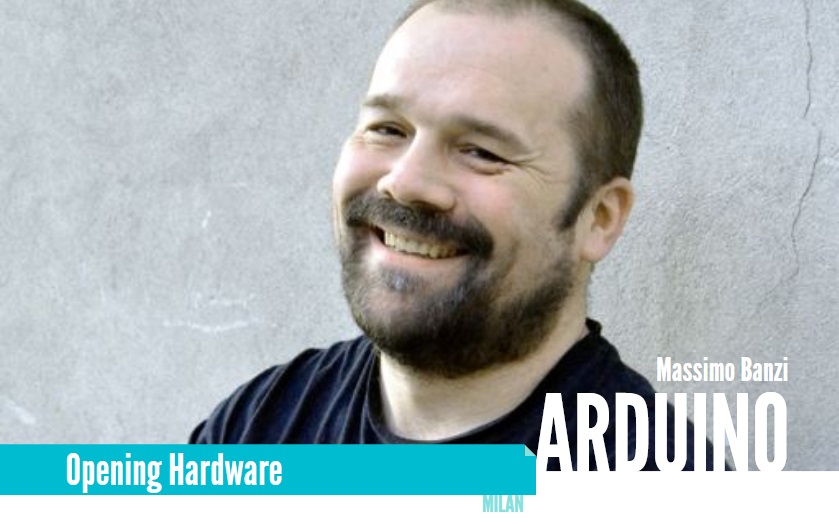
In 2005, two interactive designers in Italy, Massimo Banzi and David Quartell, decided to try something new: they took the license Creative Commons BY-SA and applied it to the design of the equipment. They named their open source physical computing platform Arduino. This is a simple microcontroller with a printed circuit board, in which switches and sensors are easily placed - a dream for DIY hardware lovers who like to create things from scratch.
Over the next few years, Massimo watched as a large number of creative and very successful projects appeared on the Arduino platform, from synthesizers and guitar amplifiers to voice IP routers. Editor-in-chief Chris Anderson launched the DIY Drones project, in which unmanned aerial vehicles built using Arduino fly. Makerbot, a popular open source 3D printer, built a more robust design based on the Arduino model.
Since Arduino schemas are licensed with CC BY-SA, so are these derivative projects. Banzi has sold over 208,000 Arduino boards, and sales are growing every year. Since Arduino is open source, the team does not need to provide technical support. “People are much more inclined to help us and say goodbye,” says Banzi. "This is a good chain reaction."
Banzi initially chose to lay the foundation of the open source Arduino when the design school where he taught lost funding. After seeing the inevitable apocalypse, Banzi uploaded his schematics to the German website Berlios, similar to Google Code, releasing GPL-licensed software and hardware design under CC BY-SA. Today, the consequences of this act go far beyond just free drawings.
“By putting Creative Commons stamps on circuit boards and circuitry, we were able to turn hardware design into a culture that people can rely on,” says Banzi. "Whatever happens to us, the project will always survive."
Open university
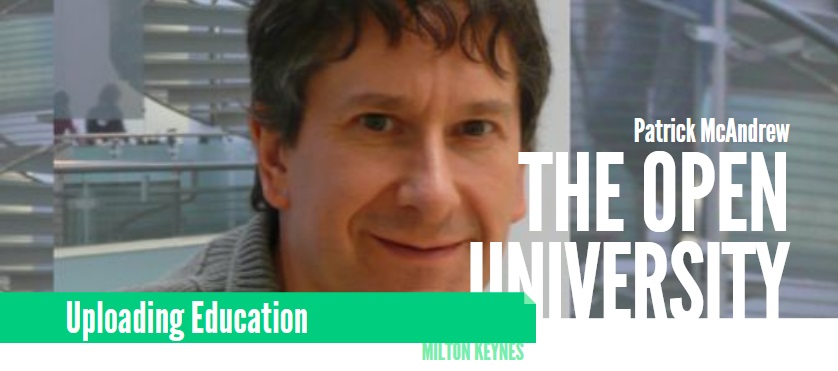
Open University accepts students from all walks of life, regardless of their academic achievements or social circumstances. It was the world's first successful distance learning university, and it is one of the largest, with more than a quarter of a million students in 40 countries participating.
In 2005, the Open University brought its openness to a new level with the new OpenLearn website, giving public access and reuse rights to its materials under Creative Commons licenses. By choosing CC licenses to develop their own set of permits, the university saved on lawyers.
“We personally set aside £ 100,000 in legal costs to write a viable OpenLearn license, but not a cent was spent because we chose CC,” says Patrick McAndrew, deputy director of training and teaching. CC licenses also helped the university save money in developing educational materials and working with third-party suppliers. “The use of a recognized license helped us to support the participation of other people in the project. In fact, we could point people to independent CC information, and not ask them to accept a license developed in-house. ”
Since its launch, OpenLearn has been visited by over two million visitors, and Open University course materials have been downloaded over 20 million times on iTunes U, making it the most downloadable university in the Apple service.
CC allowed university materials to be reused across platforms and localized content, such as translations. “The strength of open educational resources lies in the openness itself,” says McAndrew. “It gives you more flexibility, so material that we could produce in Moodle-based OpenLearn can be used in WordPress or Slideshare or YouTube or something else. OpenLearn materials can be exported and transferred in various ways in terms of technology and format. However, this portability also requires a license, which can be interpreted and transferred along with the material. CC gives us this opportunity.

#philtech (technology + philanthropy) is an open, publicly described technology that aligns the standard of living of as many people as possible by creating transparent platforms for interaction and access to data and knowledge. And satisfying the principles of filteha:
1. Opened and replicable, not competitive proprietary.
2. Built on the principles of self-organization and horizontal interaction.
3. Sustainable and prospective-oriented, and not pursuing local benefits.
4. Built on [open] data, not traditions and beliefs.
5. Non-violent and non-manipulative.
6. Inclusive, and not working for one group of people at the expense of others.
Philtech's social technology startups accelerator is a program of intensive development of early-stage projects aimed at leveling access to information, resources and opportunities. The second stream: March – June 2018.
Chat in Telegram
A community of people developing filtech projects or simply interested in the topic of technologies for the social sector.
#philtech news
Telegram channel with news about projects in the #philtech ideology and links to useful materials.
Subscribe to the weekly newsletter
Source: https://habr.com/ru/post/350890/
All Articles